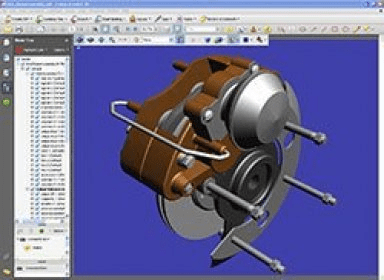
Communicate and collaborate more securely with the complete PDF solution for 3D design.
Adobe® Acrobat® 3D software empowers CAD, CAM, and CAE users to convert virtually any CAD file to a highly compressed 3D PDF file to enable 3D-based collaboration and CAD data interoperability. Increase engineering productivity by sharing Adobe PDF files containing precise geometry and product manufacturing information with users of free Adobe Reader® software to mark up 3D designs, or leverage Adobe PDF files for downstream manufacturing processes without having to buy CAD translators.
3D-based design collaboration and visualization:
* Replace static 2D screenshots with interactive 3D-based designs.
* Produce compact Adobe PDF files that can be easily shared.
* Create Adobe PDF documents from OpenGL applications.
* Reduce the need to create 2D drawings by sharing product manufacturing information (PMI).
* Share 3D designs with anyone.
CAD data interoperability:
* Send CAD data to suppliers in Adobe PDF files.
* Optimize the process of releasing CAD data to suppliers.
* Eliminate the need to buy expensive CAD translators.
* Convert native CAD designs faster.
* Improve the quality of converted CAD data you rely on.
Technical publishing:
Technical communicators can use Acrobat 3D to create richer marketing and technical documentation with interactive 3D content.
Why 3D PDF:
PDF is a highly flexible, open standard that enables more secure visualization, collaboration, CAD data interoperability, and data publishing across the entire product lifecycle. With support for industry-leading compression technology, highly compressed 3D PDF files can contain precise geometry from large, complex CAD assemblies in an archive-quality format.
Find out why Adobe PDF is the right choice when you need to share product structures and metadata or want to distribute PMI directly on a 3D model.
Comments